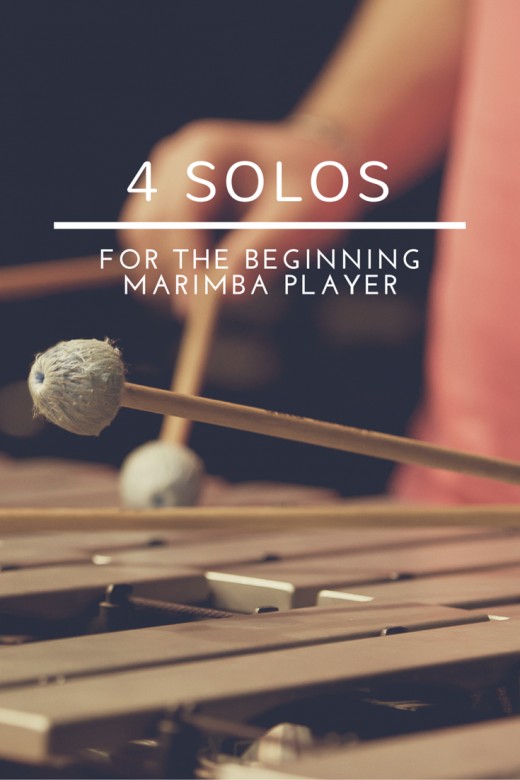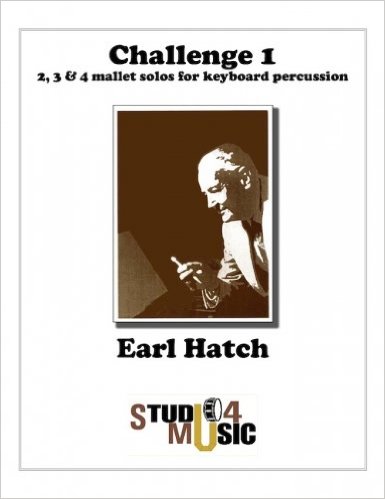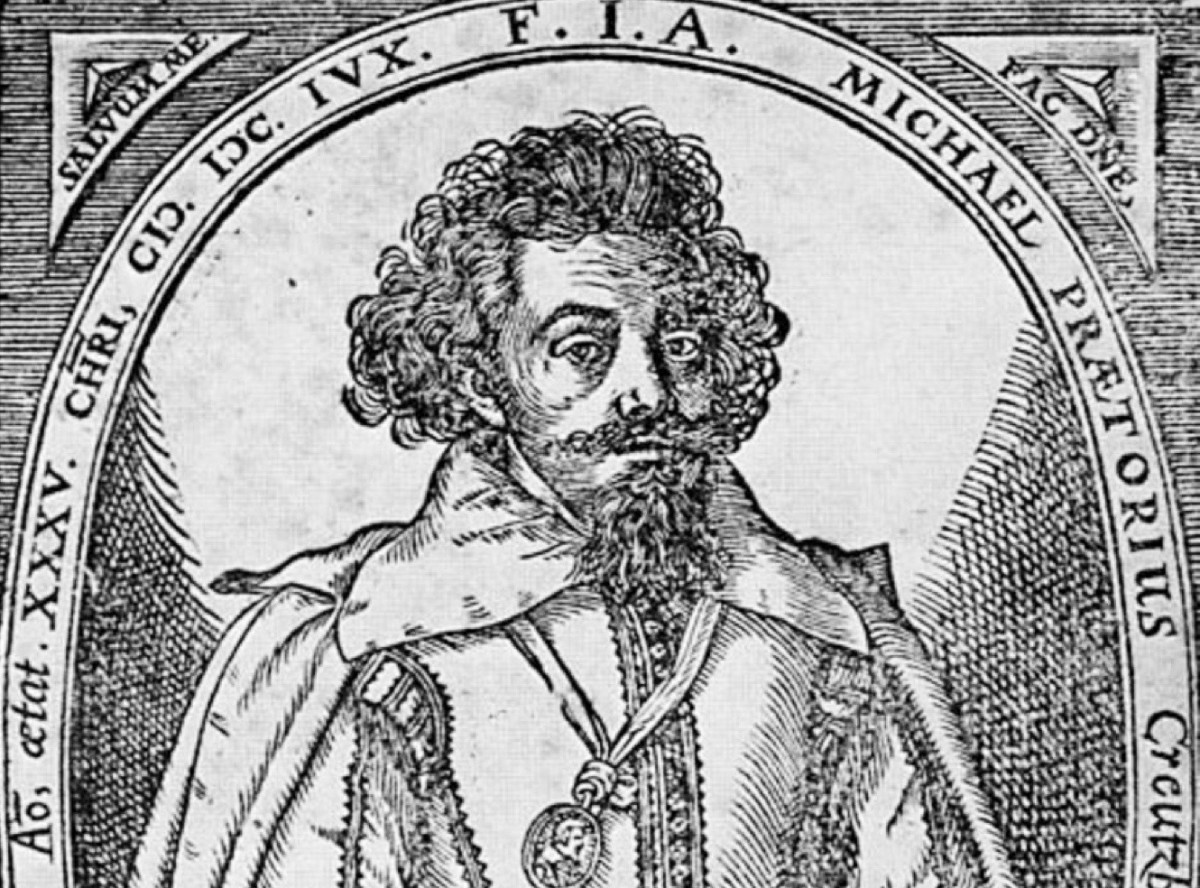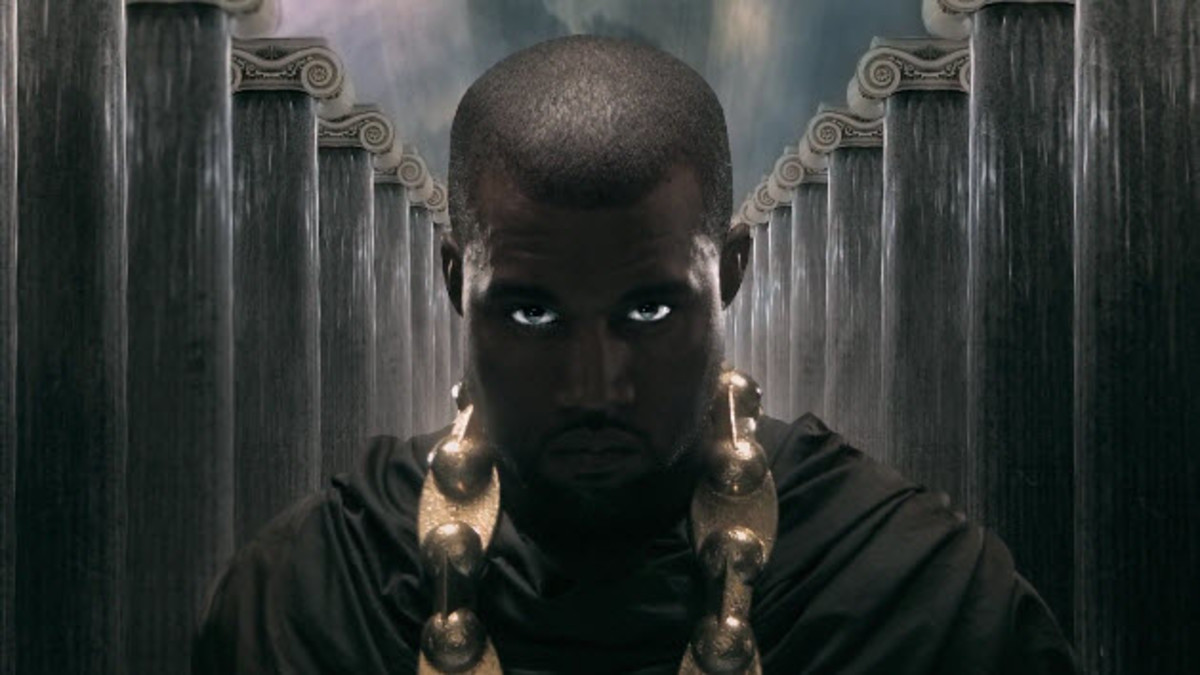Four Solos for the Beginning Marimba Player

So You Want to Play Marimba!
Or maybe your kid does. Or your Sister. Or your mother.
Regardless of who you are reading this article for, you'll find it's content useful. These solos address two, three, and four mallet solos aimed at the beginning student. All selections include a Youtube Performance and information as to where to buy the sheet music.
Two Mallet Pieces
Four mallet technique can be very difficult for the beginning student so the majority, if not all, percussion teachers will start the student on a two-mallet piece.
Two of the five solos to be introduced are two mallet pieces:
- Etude V (page 64) from Morris Goldenberg's "Modern School for Xylophone"
- Etude 1955 by Earl Hatch
Etude V

Etude 1955 by Earl Hatch

Etude 1955
This two mallet piece by Earl Hatch is quite impressive. In fact, I am quite partial to his compositions (especially this collection) as his music, this particular piece to be exact, was the first I ever played on a mallet instrument. It has a very 'Halloween- Esque' feel to it, modulating briefly here and there to give the melody some flavor. The piece does have some dynamic contrast to it (as a musician would hope to and expect to have within a contemporary piece) and throws the beginning mallet player into the world of triplets. I've found that the majority of my students prefer this solo in comparison to some other two mallet pieces I've introduced them to and that they all have picked up on it fairly quickly.
The book Etude 1995 is contained in, Challenge I, is a most excellent collection of pieces by master teacher, Earl Hatch, published through Studio 4 Music. The collection includes Furioso and Valse in D Minor, Capriccio Marimba, Dance of the Hippolollipops, Etude 1955 and Habanera.
Three Mallet Marimba
On the way up to four-mallet solos some teachers prefer to make a stop along the way to a three mallet piece: A piece with two mallets in one hand and one mallet in the other. The advantage to this is that not only is it easier to add one mallet at a time, but it is also easier for the student to draw out the melody with the one mallet instead of wrestling with two in each hand.

Dance of the Hippolollipops
This fun piece, Dance of the Hippolollipops, was also written by Dr. Earl Hatch and can be found in the same collection as the Etude 1955. It's the perfect piece to introduce a new, third, mallet. The late Dr. Hatch was actually a percussionist for Walt Disney studios and can be heard playing Bass Marimba in Disney's "The Sound of Music". This is a tune that will make the audience tap their toes to and one that the student will look forward to learning.
In fact, when I was first learning this (years ago) I decided to memorize it. To this day I am still grateful I did (although I do have to brush up on it once in a while) because it is an instant crowd pleaser and creates a more lively atmosphere, whether it be in the home or at a party. Perhaps this is due to the child-like innocence of the song, as many have mentioned to me that it reminds him or her of Winnie the Pooh, or perhaps it is due to the music is being simple, but fun to listen to. Either way, it's a keeper. I know quite a few professionals who enjoy playing this one as well.
Yellow After the Rain
Standard repertoire for four mallet marimba, this piece is often heard at solo ensembles across the United States.
Yellow After the Rain








